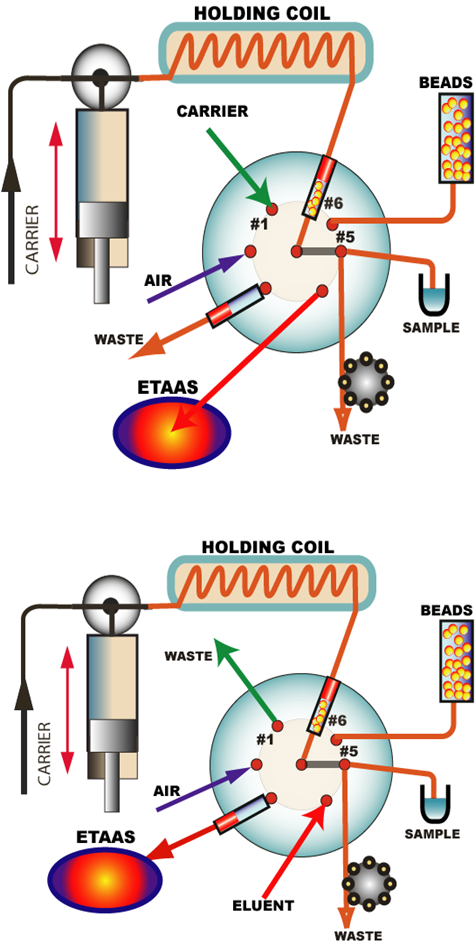Renewable Column for Atomic Spectroscopy
3.2.8.
The renewable column technique was in a series of innovative papers developed into a unique tool for the enhancement of Atomic Spectroscopies (Wang and Hansen 2000, 2001, 2003). The authors used two different approaches: incineration of the beads on which the analyte has been retained, or elution of the analyte into an ETAAS instrument.
Bead incineration (top panel), was carried out in the LOV module that accommodated one microcolumn. During the enrichment step when also the matrix was removed the Sephadex C-25 cation exchanger was held within the this column. Next the column material on which traces of NI were captured was moved, sandwiched between two air segments into ETAAS graphite furnace and incinerated.
Bead elution technique employed LOV module with two columns (See 3.4.17.). Using first column to capture Ni and after transfer into second column, to carry out elution into graphite furnace by means of diluted nitric acid, again using air segments to prevent eluate dispersion. Both methods yielded almost identical detection limits (10ngNi/L) and sampling frequencies (12s/h). In a series of subsequent works, the same method was used to assay traces of Bi and Cd using ICP.
Wang J., Hansen E.H.H, Anal. Chim. Acta 424, 223 (2000)
Wang J., Hansen E.H.H, Anal. Chim. Acta 435, 331 (20001)
Wang J., Hansen,E.H.H., . J. Anal. At. Spectrom., 16 (2001) 1349-1355
M. Miró, S. Jonczyk, J. Wang and E. H. Hansen, J. Anal. At. Spectrom., 18 (2003) 89-98.










